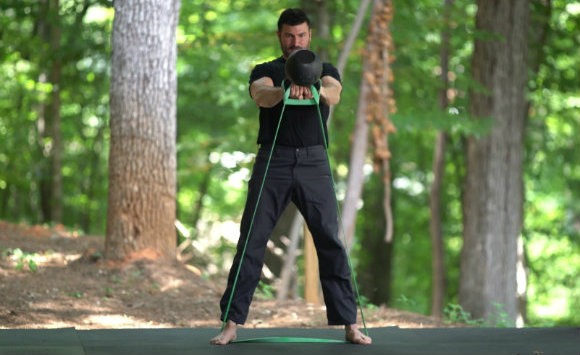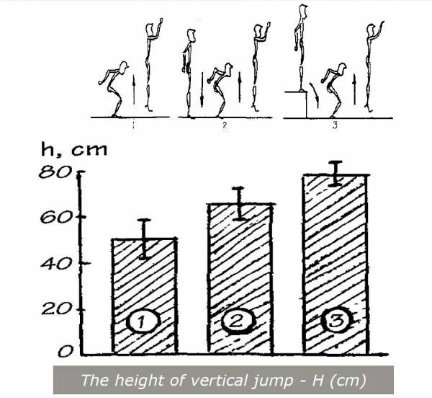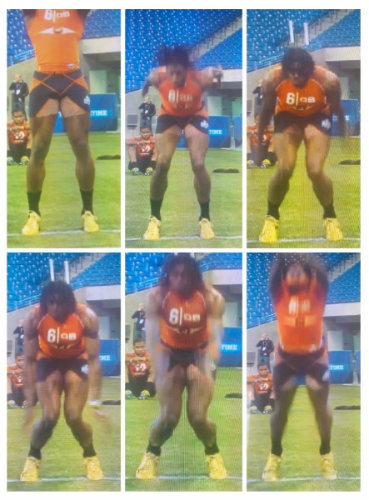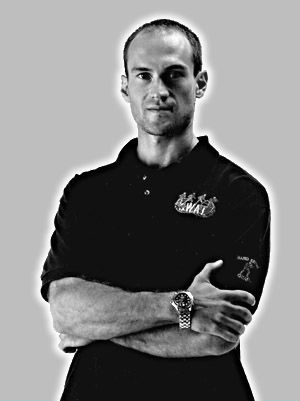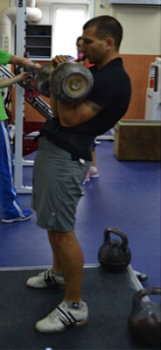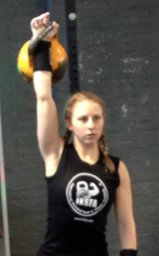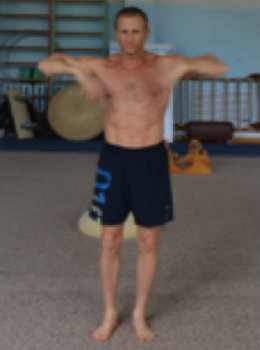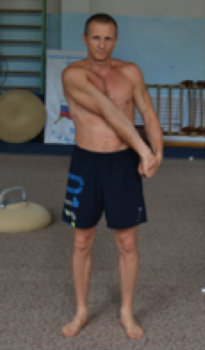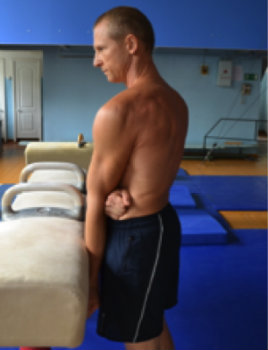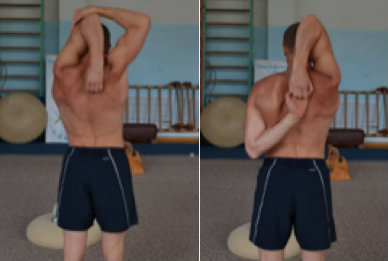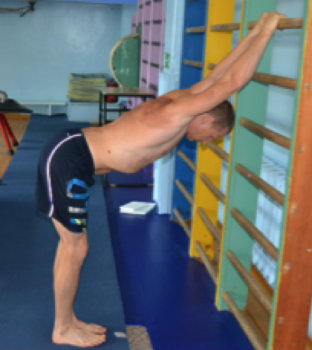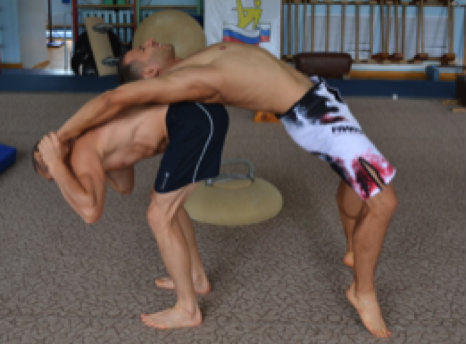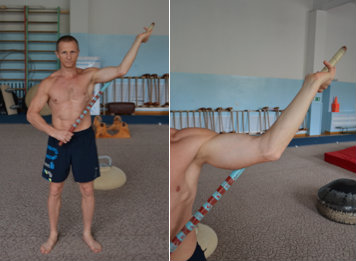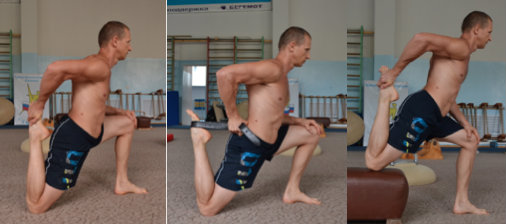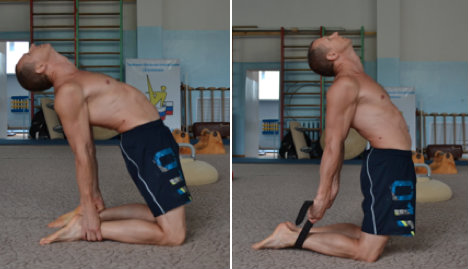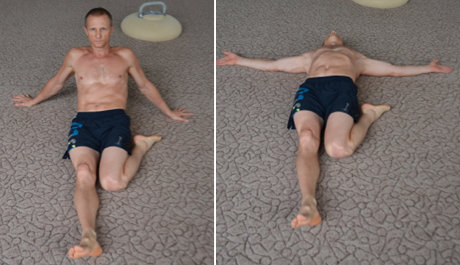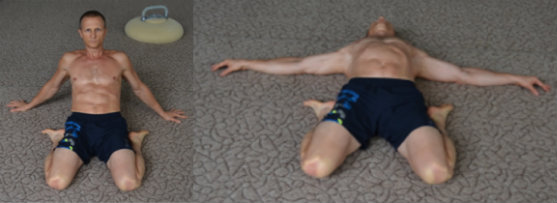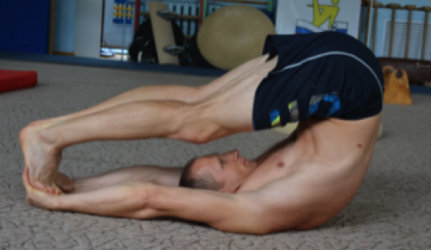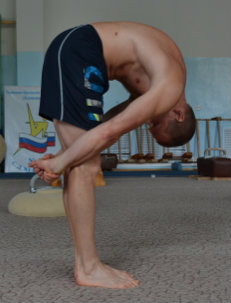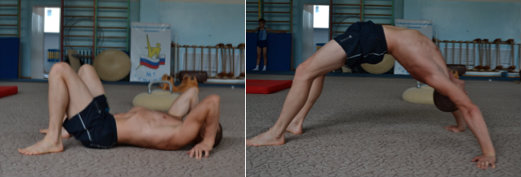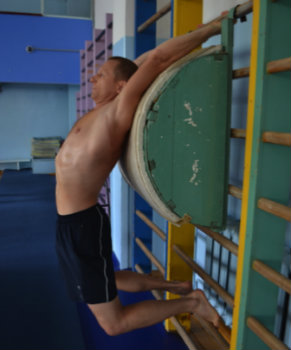By Jon Engum, Master SFG
In his original kettlebell book, Pavel Tsatsouline talks about a Program Maximum and a Program Minimum. For the younger people in the crowd (read: newer to kettlebells) some explanations may be needed.
The (R)evolution of the Program Minimum
The Program Minimum has it roots with the Russian communist coup. Here is a little background:
“The 1903 congress also adopted the party program, consisting of two parts: minimum and maximum. The two parts of the program corresponded to the two revolutions that Russian Marxists were to prepare for. The minimum program set the task of achieving a bourgeois-democratic revolution, in which the workers would aid the bourgeoisie to overthrow tsarism and establish a democratic republic. The maximum program planned for a proletarian-socialist revolution in which the workers would seize power from capitalists and establish the dictatorship of the proletaria.” (courtesy of allrussias.com)
In the context of the home budget, the program maximum would include everything from food, housing, transportation, education, retirement, etc. The home budget program minimum would include only the minimum things needed for survival.
1. Water — Food
2. Shelter
2. Shelter
Pavel took this minimalist concept and applied it to kettlebell training. While it would be ideal to have a more complex/comprehensive training program, many people do not have the means in both time and expertise to stick to that kind of training protocol. A Program Minimum with 100% compliance is much more effective, producing greater results than a complicated, time-consuming program with only 50% compliance.
The big question was: What drills would provide the biggest bang for your training buck?
Answer: 1 Grind and 1 Ballistic — Sculpted to Perfection
The original Program Minimum grind was the bent press and the ballistic was the snatch.
Many of us who started at the beginning of the kettlebell revolution grew up on a steady diet of this plan. However, it did not take long to realize that while these are great selections, for the average beginning kettlbell practicioner, these moves may be a little out of reach.
Many of us who started at the beginning of the kettlebell revolution grew up on a steady diet of this plan. However, it did not take long to realize that while these are great selections, for the average beginning kettlbell practicioner, these moves may be a little out of reach.
The bent press and the snatch demand a level of shoulder mobility that not many beginners have access to. Never one to rest on his laurels, Pavel reinvented the Program Minimum with two equally-effective drills: the swing and the get-up. With some instruction, most trainees can access the new plan without the prerequisites of the originals.
In Pavel’s words:
“The Bent Press is an exceptional lift for an advanced minimalist — but most people simply do not have the patience to build up to it. The get-up, while missing out on some of the bent press’s benefits, delivers a number of additional benefits. And, unlike the bent press, trainees of any level can benefit from it.”
Simple and Sinister was born.
The following is a plan to combine both Program Minimums into your class structure and a way to ensure that even beginners can patiently develop the correct technique. This PM2 is scalable and can be taught in a group setting, even if the skills of the group members are widely varied.
What I am about to give you is a “one-stop-shop” template that will be appropriate for the rawest recruit yet challenge the most seasoned among your students.
Exercise Genus
While the full bent press, snatch, get up, or even swing may be too challenging for a newbie, there are drills that lead to the development of these skills that anyone can handle. The first thing we need to do is get a hierarchy of drills in the same family or genus as the target exercise. Here are my choices listed from easiest to hardest.
Program Minimum – Part A – Swing
SWING GENUS

1. Kettlebell Deadlift
2. Dead Stop or Power Swings
3. Two-Hand Swings (two hands, one bell)
4. One-Hand Swings (one bell, one hand)
5. Hand-to-Hand Swings
6. Double Swings
2. Dead Stop or Power Swings
3. Two-Hand Swings (two hands, one bell)
4. One-Hand Swings (one bell, one hand)
5. Hand-to-Hand Swings
6. Double Swings
Program Minimum — Part B — Getup
GETUP GENUS

1. Arm-Bar
2. Floor Press
3. Naked Get-ups
4. Partial Get-ups (to a tall sit)
5. Tactical Lunge
6. Full Getup
2. Floor Press
3. Naked Get-ups
4. Partial Get-ups (to a tall sit)
5. Tactical Lunge
6. Full Getup
Retro Program Minimum — Part A — Bent Press
BENT PRESS GENUS

1. Bent Arm Bar
2. Half Kneeling Bent Press
3. Low Windmill
4. High Windmill (bell in top hand)
5. Bent Press
6. Two Hands Anyhow
2. Half Kneeling Bent Press
3. Low Windmill
4. High Windmill (bell in top hand)
5. Bent Press
6. Two Hands Anyhow
Retro Program Minimum — Part B — Snatch
SNATCH GENUS

1. One-Hand Swing
2. High Pull
3. Dead Stop or Power Snatches (touch and go)
4. Tempo Snatches (vary time in lockout)
5. Heavy Snatches (2-3 reps with a 5 rm size bell)
6. Double Snatches
2. High Pull
3. Dead Stop or Power Snatches (touch and go)
4. Tempo Snatches (vary time in lockout)
5. Heavy Snatches (2-3 reps with a 5 rm size bell)
6. Double Snatches
This is my list. You may have others or you may think that a three is harder than a four, but that is not the point. The take-home lesson here is a list of six drills for each movement in the order from easiest to most challenging, and there is some room for interpretation.
One more point: If you are reading this and do not know how to do any of the above drills, you are required to find an SFG Certified Instructor in your area and get some lessons!
THE PLAN: MIXOLOGY FOR PM2
The plan calls for training four days a week.
Monday: PM
- Pick 2 drills from the Getup Genus and 2 drills from the Swing Genus. Alternate between grinds and ballistics.
- Beginners should feast on a steady diet of 1s and 2s.
- Intermediate Students should focus on 3s and 4s as well revisiting 1s and 2s
- Advanced Students can play with 5s and 6s
Tuesday: Retro PM
- Pick 2 drills from the Bent Press Genus and 2 Drills from the Snatch Genus.
- Beginners focus on 1s and 2s
- Intermediate 3s and 4s
- Advanced 5s and 6s
Wednesday: Off
Thursday: Repeat Monday
Friday: Repeat Tuesday
Note to Instructors: When your new student has a good grasp on the 1s and 2s, then slowly introduce the higher level drills. They will have already seen your advanced members practicing them. So you will have some built-in retention.
To quote a student of Cole Summers SFG Team Leader and Former Team Canada Strength Coach: “Coach, when I master a new move it changes me completely.”
TIMING
How much time or how many reps should you put in to each drill? You can play this by feel, but remember to vary the load from training session to training session. Or if you have a strong foundation and have learned all the drills in your list. then try what I outline below. It will add some randomness to your training and also a bit of fun.
I borrowed the following idea from an article Pavel wrote sometime back called ETK PLUS:
Get a pair of dice. Roll one die, this will determine your first drill.
Example: If you roll a 4 on swing day, look at the swing list and find #4, you will be doing one-handed swings.
Next roll both dice. This will give you the practice time.
Example: roll an 8 and you are working for 8 minutes on one-handed swings, shoot for about 80% effort.
Roll a die again and get a 6 and you will be working on get-ups.
Roll two dice and get a 4 and you will be practicing for 4 minutes.
Repeat the rolls again for your second swing selection and second getup selection.
We have had great success with this simple program and I am sure you will as well.
Program Minimum2 – Double the fun, double the results!
Program Minimum2 – Double the fun, double the results!
Jon Engum is a Master SFG Instructor and a 7th Dan Kukkiwon Certified Grandmaster. Engum is the author of Flexible Steel, Creator, Chief Instructor of the Flexible Steel System, owner of Engum’s Academy, Engum’s Taekwondo Association, Jon Engum’s Extreme Training and is a Vice President of the Minnesota Taekwondo Association. He has presented and lectured on several continents and teaches Workshops, Courses and Instructor Certifications worldwide.


